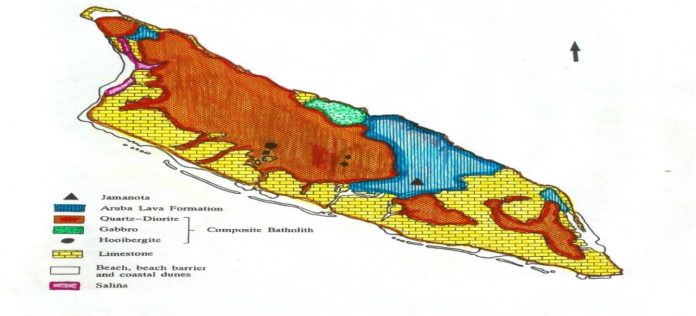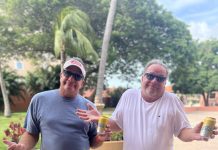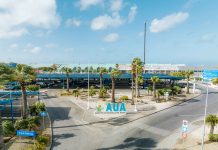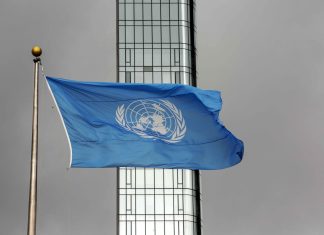Booking a magical glimpse inside Etnia Nativa is easy
Article by Etnia Nativa call us 592 2702 and book your experience!
Booking a magical glimpse inside Etnia Nativa
This platform, written by Etnia Nativa, reconnects Aruba with its true roots—celebrating native heritage, traditions, and identity long overshadowed by colonial history.
Through storytelling and landscape, it reveals an ancient legacy carved in stone—a cultural journey beyond colonial influence and into the soul of the island itself.
As you tour our island, different landscapes will catch your attention that embraces two main zones. It relates to an ancient legacy shaped by a Stoney landscape which gives our Island its character. The Quartzdiorite (QD) landscape of Aruba, particularly in areas such as Santa Cruz, Tanki Flip, Noord, Alto Vista, and Savaneta, features a network of relatively deep dry riverbeds and guts, known locally as rooi. These were formed by water erosion over thousands of years, as rainwater cut through the weathered material lying above the diorite bedrock. Many of these guts contain large quantities of QD debris, which dominates the geology around Savaneta.
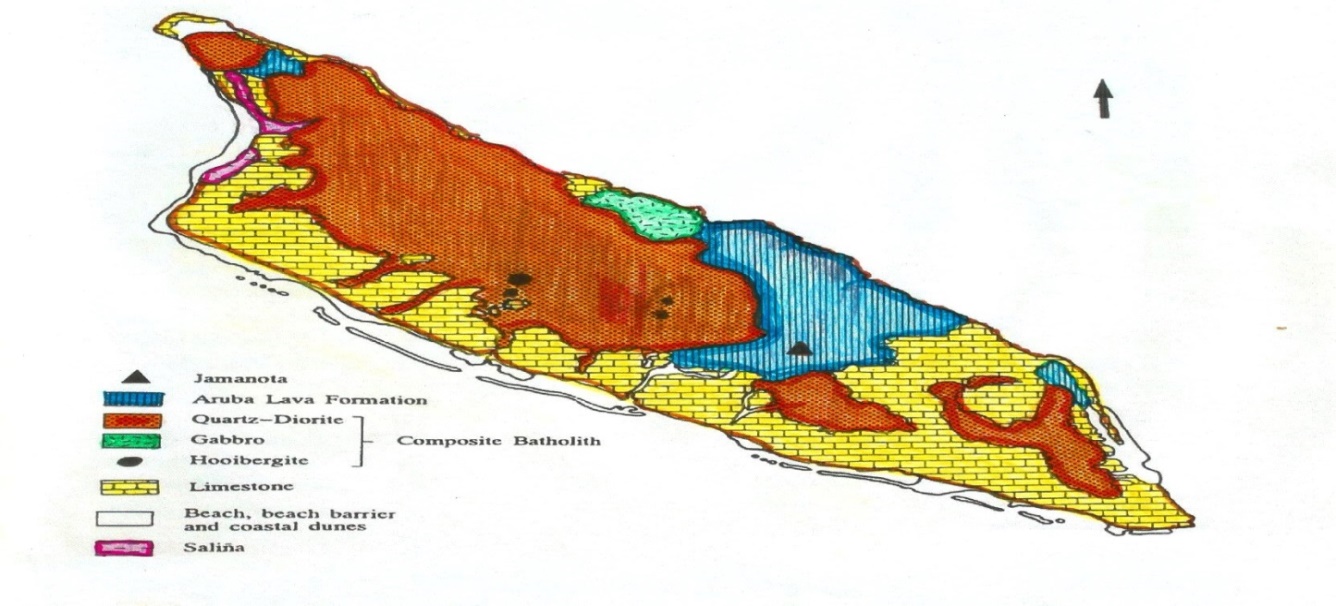
This bedrock is largely impermeable, allowing for the formation of shallow natural reservoirs within the overlying sediments. These favorable hydrological conditions made the surrounding areas ideal for vegetation growth.
The black topsoil found along the banks of these dry rivers supports plant life and offers rich agricultural potential. Our Amerindian ancestors recognized these conditions and settled in these areas, drawn by the reliable water sources and fertile soil.
One of Aruba’s most iconic landmarks is the Hooiberg (166 meters 544,619 feet), wich stands in the center of this QD landscape. This conical hill is primarily composed of hooibergite, a unique rock found only in this region. Other distinct geological features include the hills of the north coast, which are made of gabbro. Despite their differing physical appearances and weathering characteristics, the QD, hooibergite, and gabbro all originate from the same geological formation—known as the Aruban batholith. The variation in landscape features is largely due to differences in each rock type’s resistance to weathering.
Only one Pre-ceramic archaeological site is located directly within the QD landscape. Others, such as Arashi and Barcadera, are situated near outcrops or deposits of QD debris. For these early inhabitants, proximity to the coast appears to have been a more significant factor than the rock type or soil itself, reflecting the maritime focus of Preceramic cultures.
However, Ceramic period settlements—larger and more agriculturally based—are primarily found within the QD landscape. Sites such as Santa Cruz, Tanki Flip, and Savaneta benefited from the area’s fertile soils and dependable water availability.
Tanki Flip lies in a flat area with minimal boulders, and is intersected by a broad gut.
Santa Cruz features a gently rolling landscape with abundant QD boulders and deeper guts.
Savaneta, positioned at the mouth of a gut, is a coastal site where mangroves and small beaches alternate.
Another important ceramic site is Parkietenbos, which lies on QD debris. Two settlement areas are found here, located on the east and west banks of the same gut that flows through Santa Cruz. The soil in Parkietenbos is similar to that of Tanki Flip, again pointing to the importance of soil quality and water access.
The quartz diorite landscape also played a vital role in the cultural and spiritual life of Aruba’s early inhabitants. Pictographs and petroglyphs are commonly found carved or painted onto quartz diorite rocks. These rock art sites often make use of natural cavities on the leeward sides of boulders—features formed by the long-term effects of chemical weathering.
These elements of the landscape reflect not only practical interaction with the environment but also a profound symbolic and spiritual connection to the land.
Out of seventeen known rock art sites on the island, twelve are located within the QD landscape. This concentration highlights the area’s significance not just for habitation, but also for educational, ceremonial and artistic expression.
If you’re enjoying our stories, we highly recommend a visit to Etnia Nativa—where you can experience the soul of Aruba like never before.
At Etnia Nativa, you’ll walk through living history, where geology, heritage, and ancient heritage reveal the story of the island’s first inhabitants.
Founded in 1994, Etnia Nativa is a true cultural pioneer—and the only living museum of its kind in the Caribbean.
📱 WhatsApp: +297 592 2702
📧 Email: etnianativa03@gmail.com


